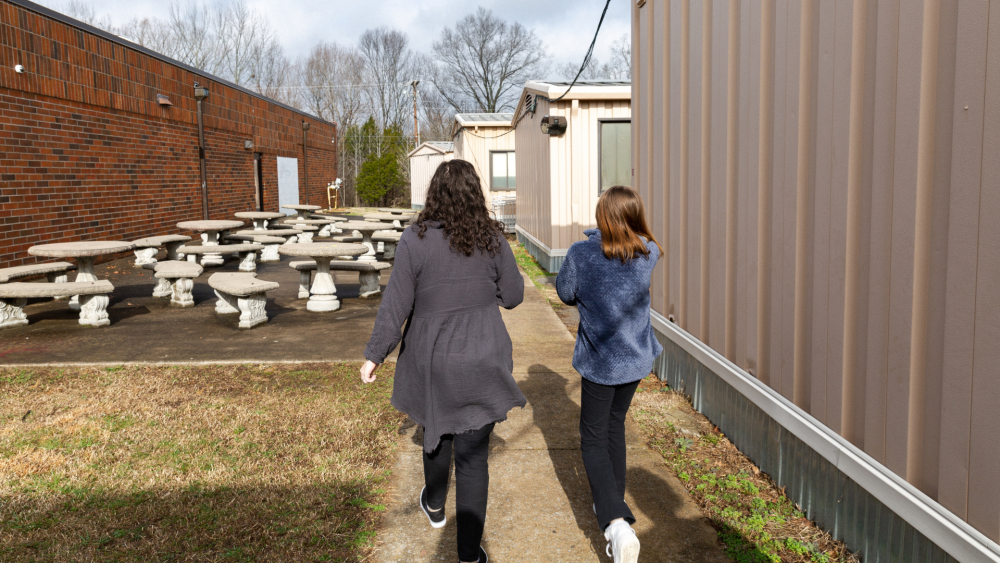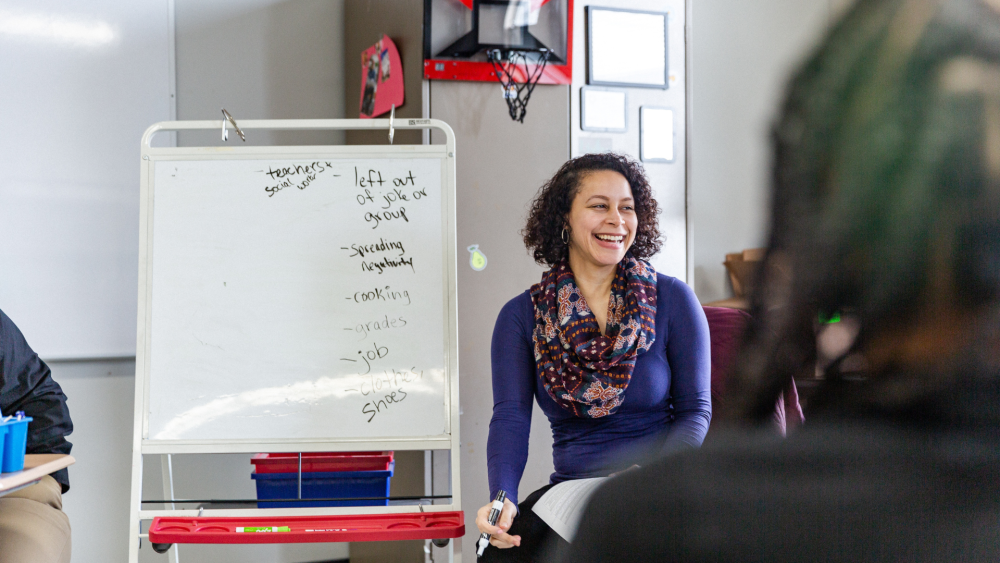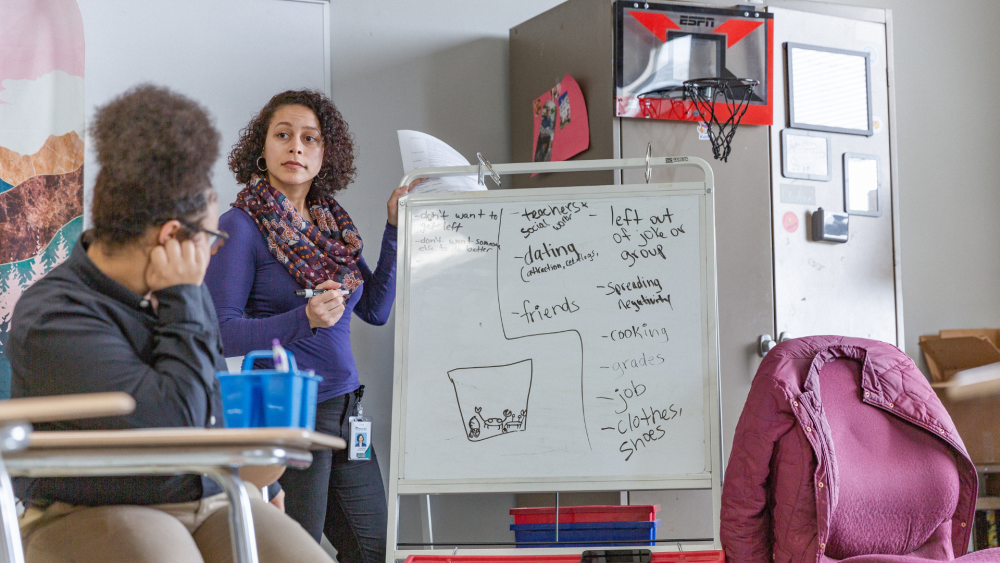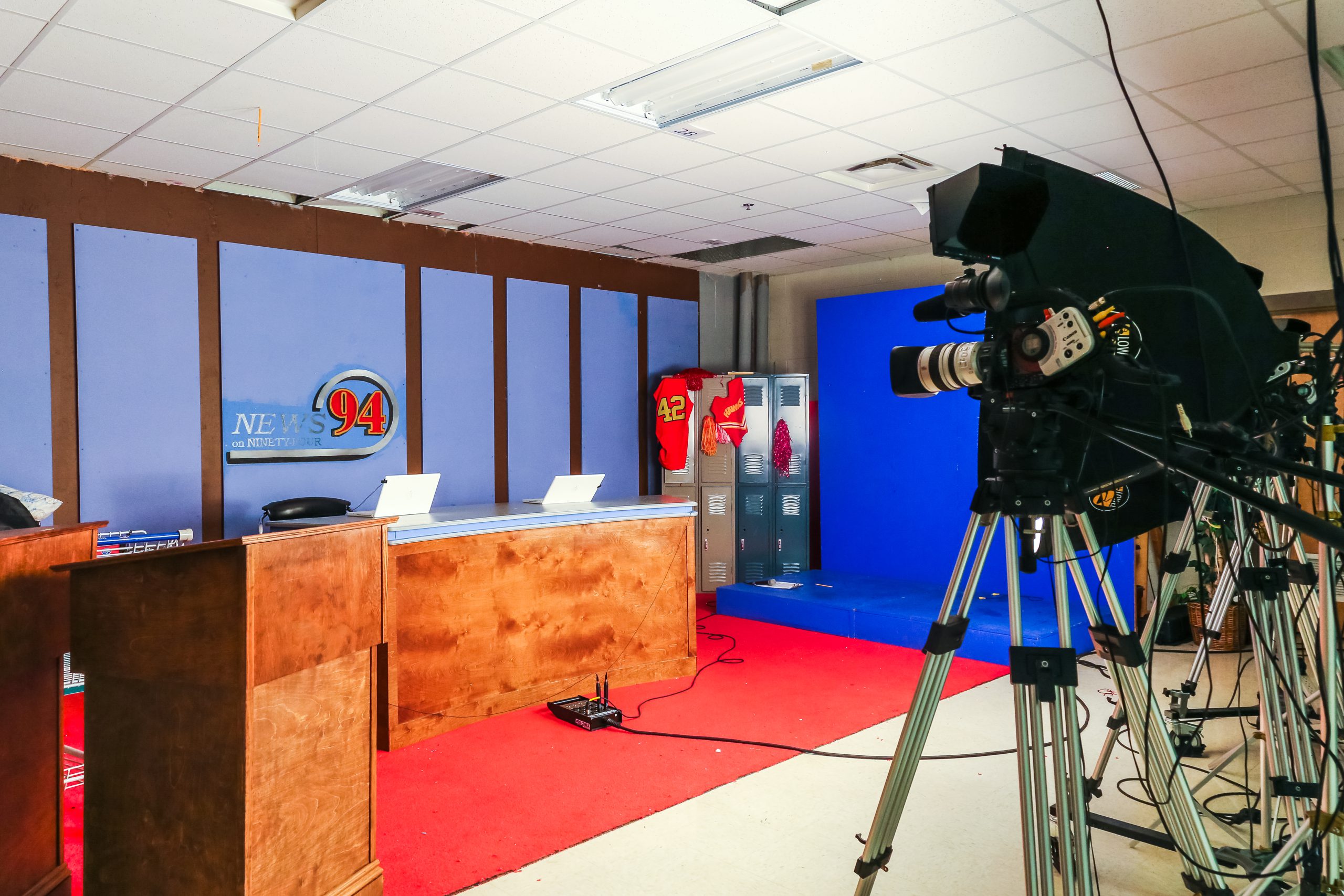The Process of Rebuilding. How school social workers are part of the solution. (Part Two)
March 15, 2023
Please note: This article was originally posted during a previous school year. Information and/or dates from past events
may be not be relevant for the current school year.
In response to the increased need for student social-emotional support, CMCSS hired nine district social workers in 2022. This small team has made great strides and continues to focus on building connections as a way to combat the struggles students experience.
“Sometimes there can be trauma behind all of that anger that we don’t know about,” said Tomecia Slade, a Lead District Social Worker for the district. “There can be some deep-rooted issues going on.” In 2021-2022, CMCSS saw a rise in negative student behavior. After reviewing the data, CMCSS found that a small percentage of students were contributing to recurring negative behavior patterns. It was not widespread, but it had a systemic effect on the schools.
What was contributing to this spike in behavior? There is not a single cause. After meeting with students, social workers often find some type of dysfunction, including fighting in the family, sickness, loss of employment, rise in social media use, financial strain, or similar circumstances play a role. “We have students that will seek attention,” said Slade. “That’s going to cause them to act out or run out of the classroom. Those negative things sometimes are going to show up as a way of getting what they want or need. If there is a void somewhere, it is going to show up.”

The district social workers are a new resource to CMCSS, and schools are growing accustomed to their presence. The team typically receives referrals through school counselors, teachers, or school-level staff. They work closely with the Families in Transition (FIT) Team and the Student Success Coaches. Alicia Willis, one of the district social workers assigned to Greenwood Alternative School, explains how they approach a new situation. “It’s nice for people to have a healthy understanding that social workers come in to assess a situation. We are going to look at a situation through our lens. When we come in and look at something, we’re looking at the big picture. At the end of the day, I have to look out for the well-being of the student and the family. I have an obligation to the student.”

The social workers are carving out a space inside of the schools and establishing their systems of support, but it takes time. Managing expectations is part of the process. Healing is not an instant fix. “There is a magic pill kind of feeling with what we do,” said Elaine Peterson. She shares that sometimes students are referred to her with a “go see the social worker, they’ll fix it” mentality, but their need is more significant than a quick fix. “There are still some gaps in our services,” she admits. The team explains how limited community resources or funding sources can inhibit a family from finding stability. Peterson shared one example of a family who had a house fire and has been living in a hotel. Although funds have run out for the hotel, they still haven’t been able to secure a place to stay.
“It takes some time,” she said. “We are trying as hard as we can to find resources.” Resources may be found inside the school as families use school washers and dryers or even the high school showers after hours.
As much as they want to support families, the team works to combat the apprehension people experience when they hear from social workers. “Social workers are new inside the CMCSS community. A lot of our families who have had difficulty with DCS automatically assume we are here to remove their kids,” explained Peterson. “We are seen in a negative light. I want the community to know we are here to support their family and help them.”
Tomecia Slade agrees. “Our main goal is not to be a person that ever removes but to increase the well-being of the entire family.”
This desire to support the whole family inspired participation in the Strengthening Families program.
“Strengthening Families is a really positive thing we’re offering directly to our community,” said Peterson. “The more we can offer these programs, the more success we will have in the school system. A lot of what is happening at home is brought to school with the kids. Even though we’re doing everything we can to provide services to the kids at school, really getting deeper into what is going on with the family is where we can see a lot of changes.” The program teaches families through a 12-week course how to communicate, connect, and how to build positive relationships. “We can teach our kids, once they respect that positive relationship in their family, how they can take that to other parts of their lives.”
Coping skills, communication strategies, and a renewed sense of hope is not limited to students. “We are seeing parents that are having a difficult time coping, and that has a great impact on our children,” said Slade.

Inside Greenwood Alternative School, Alicia Willis leads group sessions and community service activities for students struggling with finding their purpose. She describes how her students have painted a delivery truck for Manna Cafe Ministries and designed holiday cards for Veterans living in a halfway house. “Once we tell them it is for someone in the community in need, they jump at the chance to help,” explains Willis. “They have such big hearts, and they want to give back.”
The students are presented with opportunities to build their confidence and self-esteem. The group and one-on-one sessions allow them a space to express their emotions and set healthy goals. Most importantly, they build a trusted relationship with an encouraging adult.
“We help our students with empowerment,” said Willis. “We are able to empower students by taking the time to listen to them, to show them that we care. To care enough about them to say, ‘Hey, I think you need a break. Do you need to come chat for a minute, or do you just want to sit here and just have someone sit with you for a second?’ It can be empowering for them to know someone cares, someone is listening, someone is here for them, and someone is willing to try to motivate them or encourage them even though we don’t have a magic wand and can’t change their situation. We still care enough to be with them in their situation. That does a whole lot more for them sometimes.”
As the district social workers continue building awareness inside the schools and the community, they know the next step in encouraging families to reach out. “Families that we work with know about us,” said Jennifer Pitts, a social worker assigned to Rossview Elementary. “But families we do not work with don’t know about us or how to utilize us.” Families interested in connecting with a district social worker can contact their teacher or school counselor. Students can also fill out the Student Referral via Classlink if they want to reach out discreetly for support.

